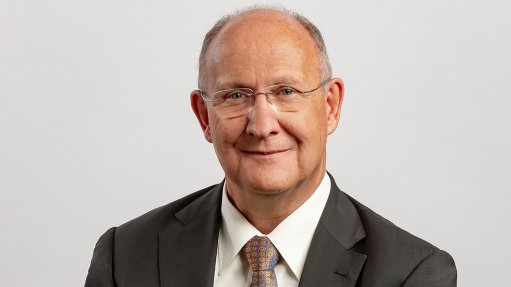DMRE to push for Cabinet approval of new-look IRP by end-March despite big revisions
The Department of Mineral Resources and Energy (DMRE) has reiterated its aim of securing Cabinet approval for a new Integrated Resource Plan (IRP) for electricity by the end of March after releasing a remodelled draft plan on Tuesday.
Dubbed IRP2024, the updated plan includes a reference case and scenarios that differ materially from those contained in the draft IRP2023 released in January, leading to some calls for more time for consultations.
A significant change in the new-look plan relates to the assumptions used for the energy availability factor (EAF) arising from Eskom’s coal fleet, dramatically changing the outlook for security of supply for the immediate future.
The EAF base case is now assumed at between 66% and 72% for the period from 2024 to 2050, albeit with a declining coal contribution over the period as plants are decommissioned.
The planners have, however, included one scenario where the life of certain power stations is extended from 50 to 60 years to address a 15 GW “second cliff” from 2032 to 2042, with the first 5 GW cliff to arise in 2030 as units that were meant to have already been decommissioned in the 2020s are finally shut.
That delayed shutdown scenario also carries the highest total system cost, though, follow by a scenario where South Africa commits to 2.5 GW of nuclear.
Together with an expectation of only moderate demand growth of 1.5% to 2% over the long term, the revised EAF means that the draft IRP2023 scenario of ongoing loadshedding until at least 2027 is now avoided.
In the remodelled IRP, the risk of unserved energy is addressed through both the revised EAF and what the DMRE describes as 38.5 GW of “committed” capacity to be added by 2030.
38.5 GW COMMITTED
The department’s Sonwabo Damba explained that the 38.5 GW pipeline included both public and private independent power producer capacity, as well as Eskom projects. It also assumes ongoing growth in rooftop solar PV capacity from 5.9 GW currently to 11.3 GW by 2030.
Also assumed to be committed is 6 GW of combined-cycle gas turbine (CCGT) generation for which Ministerial determinations have been Gazetted, including Eskom’s controversial 3 GW Richards Bay CCGT project.
The rest of the committed capacity included in the remodelled plan to 2030 is 7.8 GW of utility scale solar PV, 7.2 GW of wind, 4.2 GW of storage, 1.4 GW arising from the completion of the two remaining Kusile units and modest additional capacity arising from the risk-mitigation round, sans any powerships.
GAS & WIND FEATURE STRONGLY
While there is no second horizon in the new plan, the reference case for the period from 2031 to 2050 continues to include a significant gas-to-power allocation, as was the case in the IRP2023.
This includes 11.3 GW of CCGT, alongside 13.8 GW of open cycle gas turbine capacity. The gas allocation in the reference case is based on a gas price of $15/GJ and a constant rand/dollar exchange rate of R18.35.
A reference case with no committed CCGT has also been included, and continues to yield a high gas-to-power allocation to 2050, but at a lower overall cost.
The modest allocation to onshore wind outlined in the draft IRP2023 has been overturned in the remodelled edition, with a 76.4 GW allocation in the reference case; a development that the South African Wind Energy Association (SAWEA) immediately welcomed.
“We are excited to see that wind energy will feature as the prevalent technology in South Africa’s future energy mix.
“This allows the industry to respond with plans to build capacity in the long term to accelerate wind energy as part of the energy mix,” SAWEA CEO Niveshen Govender said.
Solar PV, by contrast, forms a far smaller part of the mix outlined in the revamped reference case at 24.3 GW; a somewhat surprising development in light of the technology’s rapidly falling costs, its surging deployment in the rest of the world and South Africa’s solar advantages.
Battery storage’s contribution is also surprisingly modest in the reference case at only 4.4 GW, but is materially higher at 10.9 MW under a scenario where more optimistic costs assumptions have been modelled.
Pumped storage and nuclear do not feature in the reference case at all, but the DMRE has modelled a ‘case for nuclear’ based on an initial commitment to adding 2.5 GW of nuclear in 2035 and 2036.
“This case requires that 6 GW of gas is commissioned by 2030 to ensure system adequacy until nuclear is available, after which a build rate of 1.5 GW will be required per annum between 2035 and 2042,” the DMRE said.
Carbon emissions and water use fall under all of the scenarios presented, as the role of coal falls over time.
However, the pace of the decline would be far slower under a scenario where Camden, Kriel, Hendrina, Grootvlei and Arnot were retired after 60 years of operation rather than 50 years.
TECHNICAL DISCUSSIONS
South African National Energy Development Institute CEO Dr Titus Mathe said engagements on the draft IRP2024, including in-depth technical discussions, would continue for the rest of the week in line with a goal of wrapping up consultations by November 30.
The plan would then be subjected to an internal review and an external assessment by a Chinese energy planning specialist company.
DMRE’s Thabang Audat also confirmed that the IRP2024 would be consulted at the National Economic Development and Labour Council and be subjected to a socioeconomic impact assessment before proceeding to intergovernmental bodies where policy adjustments will be discussed.
It would then enter the Cabinet process with the goal of having it approved by Cabinet by the end of March.
The truncated nature of the public consultation process has raised eyebrows, however, with the Organisation Undoing Tax Abuse having already formally objected and with others expected to do likewise.
Comments
Press Office
Announcements
What's On
Subscribe to improve your user experience...
Option 1 (equivalent of R125 a month):
Receive a weekly copy of Creamer Media's Engineering News & Mining Weekly magazine
(print copy for those in South Africa and e-magazine for those outside of South Africa)
Receive daily email newsletters
Access to full search results
Access archive of magazine back copies
Access to Projects in Progress
Access to ONE Research Report of your choice in PDF format
Option 2 (equivalent of R375 a month):
All benefits from Option 1
PLUS
Access to Creamer Media's Research Channel Africa for ALL Research Reports, in PDF format, on various industrial and mining sectors
including Electricity; Water; Energy Transition; Hydrogen; Roads, Rail and Ports; Coal; Gold; Platinum; Battery Metals; etc.
Already a subscriber?
Forgotten your password?
Receive weekly copy of Creamer Media's Engineering News & Mining Weekly magazine (print copy for those in South Africa and e-magazine for those outside of South Africa)
➕
Recieve daily email newsletters
➕
Access to full search results
➕
Access archive of magazine back copies
➕
Access to Projects in Progress
➕
Access to ONE Research Report of your choice in PDF format
RESEARCH CHANNEL AFRICA
R4500 (equivalent of R375 a month)
SUBSCRIBEAll benefits from Option 1
➕
Access to Creamer Media's Research Channel Africa for ALL Research Reports on various industrial and mining sectors, in PDF format, including on:
Electricity
➕
Water
➕
Energy Transition
➕
Hydrogen
➕
Roads, Rail and Ports
➕
Coal
➕
Gold
➕
Platinum
➕
Battery Metals
➕
etc.
Receive all benefits from Option 1 or Option 2 delivered to numerous people at your company
➕
Multiple User names and Passwords for simultaneous log-ins
➕
Intranet integration access to all in your organisation





















